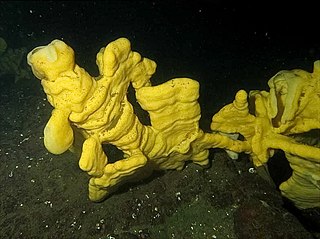
Vastu shastra is a traditional Hindu system of architecture originating in India. Texts from the Indian subcontinent describe principles of design, layout, measurements, ground preparation, space arrangement, and spatial geometry. Vastu Shastras incorporate traditional Hindu and Buddhist beliefs. The designs aim to integrate architecture with nature, the relative functions of various parts of the structure, and ancient beliefs utilising geometric patterns (yantra), symmetry, and directional alignments.. In his review of research on superstition and real estate, Stuart Vyse concludes that "...just as in the case of feng shui, there is no scientific basis for the claims of vedic architecture"; others have described Vedic architecture claims as a form of pseudoscience.

The patella, also known as the kneecap, is a flat, circular-triangular bone which articulates with the femur and covers and protects the anterior articular surface of the knee joint. The patella is found in many tetrapods, such as mice, cats and birds, but not in whales, or most reptiles.

The quadriceps femoris is a large muscle group that includes the four prevailing muscles on the front of the thigh.

The vastus medialis is an extensor muscle located medially in the thigh that extends the knee. The vastus medialis is part of the quadriceps muscle group.

The vastus intermedius (Cruraeus) arises from the front and lateral surfaces of the body of the femur in its upper two-thirds, sitting under the rectus femoris muscle and from the lower part of the lateral intermuscular septum. Its fibers end in a superficial aponeurosis, which forms the deep part of the quadriceps femoris tendon.

The vastus lateralis, also called the ''vastus externus'' is the largest and most powerful part of the quadriceps femoris, a muscle in the thigh. Together with other muscles of the quadriceps group, it serves to extend the knee joint, moving the lower leg forward. It arises from a series of flat, broad tendons attached to the femur, and attaches to the outer border of the patella. It ultimately joins with the other muscles that make up the quadriceps in the quadriceps tendon, which travels over the knee to connect to the tibia. The vastus lateralis is the recommended site for intramuscular injection in infants less than 7 months old and those unable to walk, with loss of muscular tone.

The Stichopodidae are a family of sea cucumbers, part of the order Synallactida.
The Hispaniolan giant tree frog, or Hispaniola tree frog, is a species of frog in the family Hylidae endemic to Hispaniola and found in both the Dominican Republic and Haiti. It is patchily distributed in across the island. Populations from the southern part of Hispaniola may represent a separate, as yet undescribed species.

The cloud sponge(Aphrocallistes vastus) is a species of sea sponge in the class Hexactinellida. It is a deep-water reef-forming animal. The species was first described by F.E. Schulze in 1886.

Australostichopus mollis, formerly Stichopus mollis, commonly known as brown sea cucumber or Australasian sea cucumber, is a species of sea cucumber that has stimulated interest for its fishery potential in the Southern Hemisphere, and for its capability to reduce waste produced by aquaculture. It is the sole species in the genus Australostichopus. Despite its ecological role and abundance in New Zealand coastal waters, the scarcity of knowledge regarding A. mollis biology and ecology has hindered the development of a stable fishery industry. Importantly, A. mollis represents promising business potential within an important Asian market. Recently its potential as a functional food has been evaluated, highlighting the nutritious components

Stichopus chloronotus is a species of sea cucumber. Common names include the greenfish sea cucumber, the spiky sea cucumber and the black knobby sea cucumber. It is native to the Indo-Pacific region. It has a wide range and is abundant and the IUCN lists it as being of "Least Concern".

Stichopus horrens is a variable, grey to green/black sea cucumber from the Indo-Pacific. It is often variegated with dark patches. It is a medium-sized species with a smooth tegument but large and irregular papillae. The big tubercles and irregular body form give an "irregular, soft and almost repulsive" appearance. Spicules are tables and large "C" bodies. S. horrens many be found on reefs, below rocks on flats.

Stichopus is a genus of sea cucumbers.

Synallactida is a rankless clade of sea cucumbers, but is referred to as an order. Taxa within Synallactida were previously classified in an order called Aspidochirotida, which was determined to be polyphyletic in 2017.

Herrmann's sea cucumber, is a species of holothuroidean echinoderm in the family Stichopodidae. It is found in the tropical, western Indo-Pacific Ocean, at depths down to 20 m (66 ft). This and several other species are known as curryfish and are harvested commercially; it is called gama in Indonesia.

Stichopus monotuberculatus is a species of sea cucumber in the family Stichopodidae. It is found in the tropical, western Indo-Pacific Ocean.

Stichopus ocellatus is a species of sea cucumber in the family Stichopodidae. It is found on the seabed in the tropical, western Indo-Pacific region.
Stichopus rubermaculosus is a species of sea cucumber in the family Stichopodidae. It is found on the seabed in the tropical, western Indo-Pacific region.

Stichopus noctivagus is a species of sea cucumber in the family Stichopodidae. It is found on the seabed in the tropical, western Indo-Pacific region.














